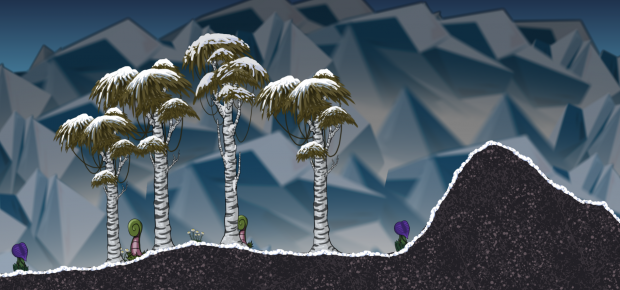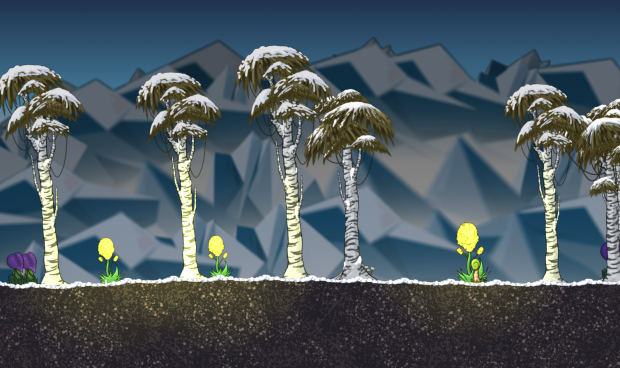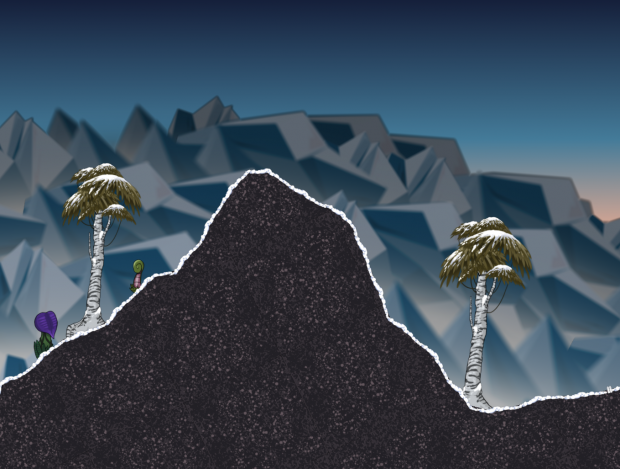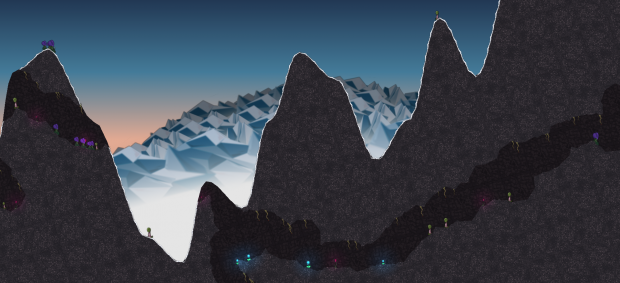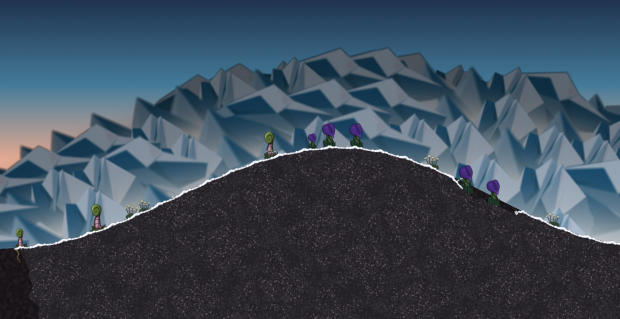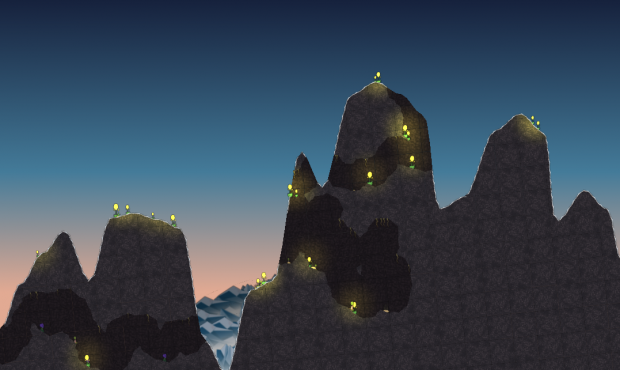For a long time the planets have been completely flat, but a few weeks ago we experimented with adding mountains to the planet surface. The mountains adds a lot to the game and makes it much more interesting to explore. You'll find various types of mountains around the planets, from small smooth hills to tall spiky mountains. Here's some images we captured from the game. Note that many things seen are still in development and especially the snow on top of the terrain and the terrain tiling might look odd some places. If you're interested in some of the technicalities of creating the mountains, see the text below the images.
There's one central thing that we use for creating mountains and that is the midpoint displacement algorithm described by Paul Martz. We use this in one dimension to define the height of the planet surface all around the planet.
Initially we have a straight line that represents the surface. When we use the algorithm on this line, it splits it into two segments and set a random height offset (the displacement) in the split between the segments (the midpoint). It then splits each of these segments into two segments with a random height offset in the split between them. This goes on for as many times as we want, and for each time, the range of random values for the midpoint height offset is reduced. The reduction is important to create mountains, without it there would only be spikes. We can then vary the amount of reduction to create more or less spiky hills. If you want a more in-depth and better explanation (with images!), see the link to the algorithm above.
To vary the mountains you'll find around the planet, we place segments of random length (within a specified range) where one type of mountains will be created. That's why you can find tall mountains, spiky mountain, small hills and other types, as seen in the images above, when you travel around the planet.
Follow the project
Our project site: Suttungdigital.com
Follow us on Twitter: Twitter.com
Check out our page on IndieDB: Indiedb.com
Like us on Facebook: Facebook.com
Follow us on Google+: Google.com
Follow us on LinkdIn: Linkedin.com
